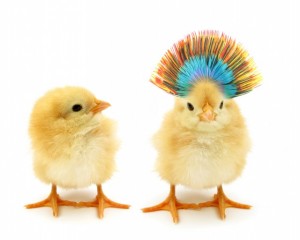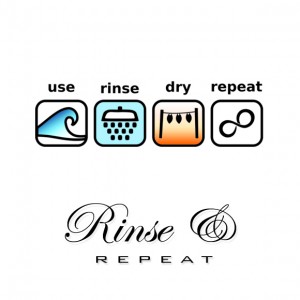As a freelance content writer, part of what I do involves keeping my ear to the ground and spotting trends in online conversations. Lately the air has been abuzz with many things: politics, machine learning, natural disasters, relief efforts, and other developments that will no doubt go on to characterize 2017. But one trend in particular really caught my eye and gave me some hope; the conversation surrounding mental health is really gaining steam.
About three weeks ago, I decided to start a thread on Twitter full of mental health resources for people who couldn’t afford therapy. There has been a lot of mainstream talk about talk about psychotherapy. Jay-Z even mentioned it on his latest album. It’s been heartening for me because now I see that the subject has become less taboo.
But there has also been a lot of talk about how people are struggling financially, especially among the millennial generation. As someone who has been diagnosed with clinical depression, the thread I started was born from a genuine desire to help people get the help they need. So far, that thread has gained 66,212 retweets and counting. That’s over 66,000 shares in only three weeks! It’s also gained 6.7 million impressions, 238,253 engagements, and led to 9,952 clicks on my profile.
Apparently, I’ve done something right! It’s very gratifying to know that I’ve done something that will no doubt help a lot of people. I’ve gotten numerous “thank you” messages, and also follow up questions from people who have been seeking help for a long time. The experience has also given my online marketing brain a chance to observe what it takes to make a social media post go viral, so that I can replicate that in the future. I’ve boiled it down to eight things that I definitely did right.
- I spotted a trend. I’m on Twitter quite a lot, both for work and personal interaction. It’s an excellent platform to get a feel for what people are talking about these days. News moves fast on Twitter, but usually there are a handful of topics that stay consistent over several months. A lot of people in my sphere or influence were discussing things like mental illness awareness, therapy, self care, and topics relating to it. Because of my experience with depression, I was able to pick up on this quickly. If you monitor social media, RSS feeds, and/or Google alerts for topics that are relevant to your skills and experience, you’ll find opportunities to add your voice to the conversation.
- I had a genuine desire to help. I know that as a freelancer, I often get so caught up in the business of what I do that my desire to help becomes secondary. But all in all, I’m a person who likes to use what she has to help other people solve their problems. This is why it’s important to get to the root of why you do what you do. What are you good at? What do you know? Are you demonstrating that you can use that to get desired outcomes for others? When people see that you’re a helpful person, they’re more likely to trust you and invite you into their sphere or influence (it’s worth mentioning that I’ve gained close to 600 followers in the past month).
- I curated genuinely useful resources. There are a ton of resources on mental health out there. Everything from apps, podcasts, blogs, books, online programs, and just about any other medium you can think of. All of the resources I suggested in my thread were things that I had either used personally or heard lots of good things about. Readers can tell the difference between something that’s been cobbled together and something that’s been carefully assembled. Be sure to share your personal experience with the resources you curate when applicable.
- I went to the right platform. Twitter is the place where I spotted the mental health trend, and it’s also largely made up of the demographic I wanted to reach: young folks who wanted to help themselves but couldn’t afford the costs of therapy. This is why it’s important not to be a jack-of-all trades when it comes to social media. Find out where your audience frequents. You can do this by seeing where the major players in your industry are most active, or by simply asking your current and past clients where they spend their social media time.
- I used a relevant heading. In my initial tweet, I made it clear what problem I was addressing and what the solution was. “Mental health resources for people who can’t afford therapy right now.” It’s the simple copywriting trick of touching on the pain point and introducing a solution. No need for flowery language. When using Twitter, you need to be brief in what you say. You can apply the same approach to other social media platforms and also blog post headings.
- I called people to action. The second part of my tweet asked people to read and retweet the thread to spread awareness. The call to action is another simple copywriting trick. Merely suggesting that readers take a certain action in response to your message makes them more likely to do it.
- I took time to interact. Human interaction is a cornerstone of life, and the whole basis of social media. It’s important to respond to people who respond to your social media posts and blogs. And be genuine in your responding. Take time to answer questions, thank people, and otherwise respond accordingly. If you can’t find the time, hire someone to help you do it.
- I promoted myself. After my thread gained some traction, I added that I was a freelance writer available for hire, along with a link to my portfolio. Granted this wasn’t targeted traffic intended to bring me new clients, but I did get a valuable job lead and also a well-paid guest blogging opportunity. Don’t assume that people know that you have something to offer, and don’t be afraid that you’re imposing by promoting yourself. If people really like you and what you have to offer, they’ll either solicit your services or help you get the word out.
All in all, being personable, being helpful, and getting yourself in front of the right audience are all key to online marketing success. It works for the neighborhood grocer and it works for online marketers. Also, I’d encourage you to examine your successes to see what you did right. Who knows what kind future success those insights could bring?
(66)






